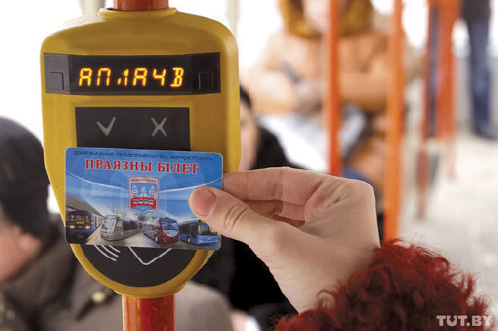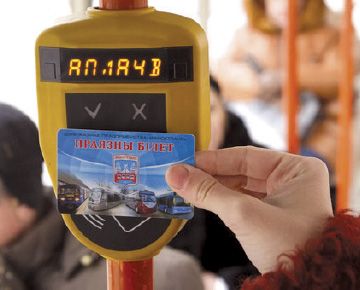Not so long ago, it seemed that we loved to complain about public transport, especially the inconvenience of ticket machines jamming. Now, we seem to have taken to efficient e-card tickets as if we’ve been using them our whole life.

Public transport inspectors are a common sight
Andrey Paplevka, the Deputy Director General of Minsktrans enterprise, notes that the automated fare system is easy to update, and that a differentiated payment system, based on distance covered, may soon be forthcoming. It would work by reading the point of entry and exit, charging fully at the start of the trip, but refunding sums to the e-card, as needed, at the end of the journey.
From early 2015, suburban routes have been trialling the equipment and software for such tariffs, although it’s still too early to speak of a launch date. One thing is clear: we’ll soon be obliged to use this innovation and shouldn’t be distrustful. Just remember how you felt on first receiving your e-ticket cards; now, we use them more than paper travel cards (4,800,000 paper travel cards were sold over 11 months in 2013, compared to 5,800,000 e-cards over the same period of 2014).
Electronic travel cards eliminate the need for paper printing costs and ticket inspectors (many now work in ‘control’). In fact, there were just over 100 inspectors, while their current number reaches 400, checking routes — over 300 — each day, in two shifts.
Speaking of advantages, flexibility should be noted. “At present, we have over 200 types of card: monthly, for ten days, single trips, as well as those for one, two or all types of public transport, plus express routes and urban electric trains — in all possible combinations,” explains Mr. Paplevka. There are 330 kiosks in Minsk, allowing passengers to buy cards and refill their balance. The system also gives an objective picture of passenger flow: which routes are more or less popular and at which times. When all transport innovations are fully ‘polished’, routes will be corrected to reflect passengers’ needs. We expect more such innovations this year.
By Natalia Vladimirova











